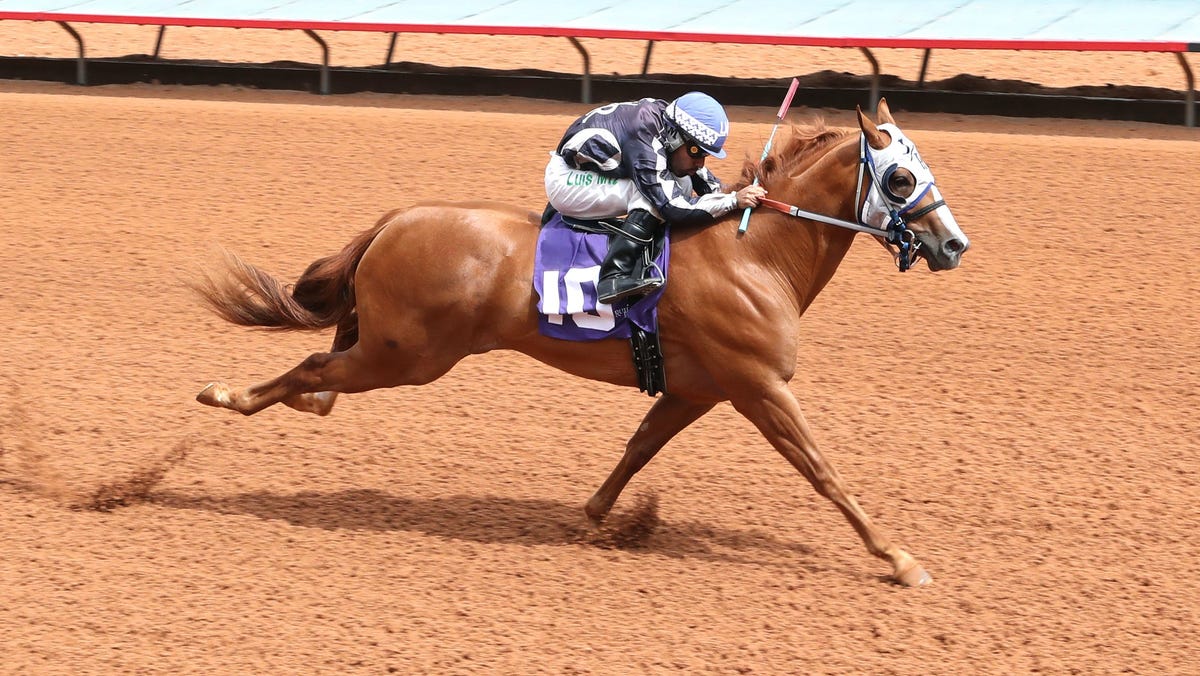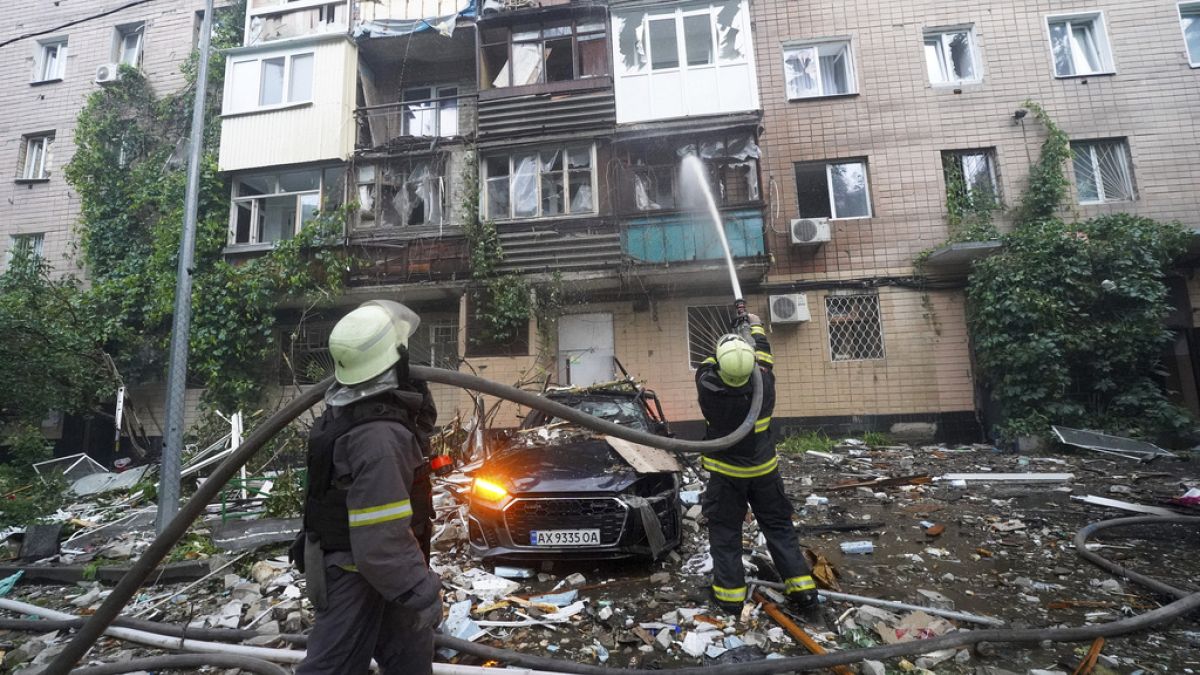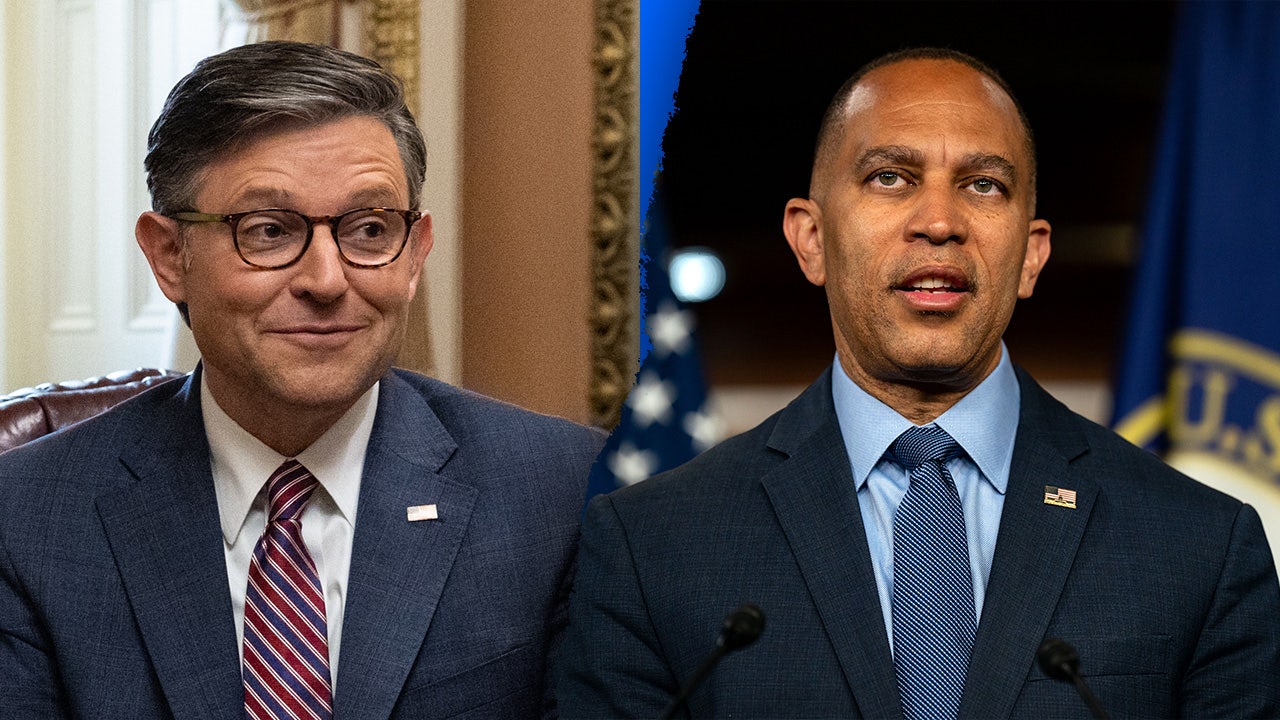Entertainment
Ridley Scott's 'Modville' graphic novel debuts during a tough time for comics. Can it survive?

When Ridley Scott, visionary director of “Alien,” “Blade Runner” and “Gladiator,” connects with your story, it’s probably a good idea to explore it in any medium possible.
“Modville,” a four-issue neo-noir graphic novel set in New Orleans in 2169 that unfolds in a world of crime and artificial humans (known as mods), was just that story. Created by Jesse Negron, co-written by Joe Matsumoto and with art by Hendry Prasetya and Eko Puteh, the comic touches on themes of father-daughter relationships, morality and humanity. The comic series bucks the current trend of reframing superhero narratives. Instead, it’s an original idea that will go direct to consumers (versus being released by a big publisher like Diamond and Penguin Random House) and initially be printed in a prestige format (a 200-page hardcover instead of single issues). It’ll also have an idiosyncratic schedule, free of month-to-month pressures.
Negron, who had previously worked with the director and his late brother, Tony Scott, pitched the seemingly radical idea of doing a comic book to Tom Moran, senior vice president of Ridley Scott’s film and TV company Scott Free Productions.
“Tony was a big fan of Jesse’s. We met and talked about his ideas, and I said, ‘Well, what do you want to do? Film or TV?’ He said, ‘I really want to do comics, but you guys don’t do that.’ I said, ‘Why not?,’” said Moran. “As an entertainment company, especially these days, you have to evolve. We have to reach out and expand to new forms of entertainment. Honestly, Ridley was probably like, ‘We should have done this a long time ago.’ He’s such a good artist himself.”
Director Ridley Scott said doing a graphic novel felt like “a natural evolution.”
(Scott Free Productions)
“Collaborating with Jesse Negron and Mechanical Cake on graphic novels feels like a natural evolution for myself and Scott Free,” said Ridley Scott via email.
Through his company Mechanical Cake, Negron will be introducing the graphic novel, as well as a “Modville”-style booth, at WonderCon in Anaheim this weekend. Negron, Moran, publisher and editor Dave Elliott, and Anthony Francisco, a senior visual development artist for Marvel Studios, will discuss the ins and outs of the company in a panel Saturday.
Launching ‘Modville’
Negron has been working on the idea for “Modville” for at least 5 years. Negron and Chief Financial Officer Tom Sanders launched Mechanical Cake in 2015 to not only create comics but to also cultivate new ideas in multimedia.
“Mechanical Cake is a world-building [intellectual property] creation team that is focused in the sci-fi-fantasy-action-adventure genre,” said Sanders. “The goal of any creative is not only to tell the story but to get it to the world and get the fans involved.”
The company’s association with Scott already adds cachet to the title, but obtaining his blessing was only the first step.
“There’s no doubt that for me to launch at the bar of Ridley Scott, it’s a lot of pressure to be honest,” said Negron. “It’s sometimes very difficult to work at the level he works at because he’ll just go, ‘Meh, I don’t know.’ To work at his level where he goes, ‘Whoa, you guys keep doing this. Whoa, you did that!?’ That was really important to me.”

Jesse Negron built the motorcycle prop he’s sitting on as part of the “Modville” booth that will be assembled for WonderCon.
(David Roberson)
Getting on the same page as your business partners is only one of the hurdles to overcome when launching an independent comic book. With the sale of Diamond Comic Distributors to Alliance Entertainment, the comics industry may breathe a sigh of relief, but market leaders still tend to dominate attention and shelf space, limiting sales for small presses and direct-to-market players. Diamond helped unknown titles get the word out through its Previews catalog, but with its bankruptcy and subsequent sale, it’s unclear how the acquisition will affect the comics industry.
Of the 40 most popular graphic novels in 2024 (based on units sold), only four titles weren’t published by the leading comics companies — which include Marvel Comics, DC Comics, Image Comics, IDW Publishing, Dark Horse Comics and BOOM! Studios. Those titles include “Dog Man: The Scarlet Shedder” by Graphix, “Uzumaki” and “Chainsaw Man, Vol. 1” — both by VIZ Media — and “Jimi Hendrix: Purple Haze” by Titan Comics. This trend is seen with periodical comic books too, with only four franchises outside of Marvel and DC able to crack the top 50 comics of 2024. Those all happened to be well-known ’80s titles such as Image’s G.I. Joe and Transformers, IDW’s Teenage Mutant Ninja Turtles and Dynamite Entertainment’s Thundercats.
But it’s an uncertain time for all entertainment sectors. Like the movie industry, comic book sales and consumer trends indicate that introducing an original story, without an established distribution network, like the one Diamond provided for decades, is a daunting and risky task.
Film and comics have a lot in common, which is also why the union of Scott Free Productions and Mechanical Cake makes sense to the parties involved.
“They deliver like nobody else on the planet in this genre. Science fiction, action, the edge of fantasy. I can’t think of a better partner to team up with than Scott Free,” said Sanders. “Doing a comic book is like doing a film or TV show but with more details. Everything on the panel is intentionally put there, just like you do in a film or TV show. If you’ve done it right, you pretty much have laid out a storyboard that anyone should be able to follow. We want to build a world for others to create stories in as well.”
Scott, known for his detailed storyboards, was also drawn to the comics because of his background as an artist.
“To watch Ridley draw is amazing. He’s such a visionary, from mind to pen to hand to paper. You can flip through his storyboards and see the whole movie. It’s truly an art form, and that’s essentially what you’re getting from comics,” said Moran.
Bill Sienkiewicz is one of the prominent artists who will help create the visual language for “Modville,” specifically in crafting covers for the series. Sienkiewicz said he enjoys the “grunge” technology in the story, which harks back to something familiar.

Poster art from “Modville” by artist Bill Sienkiewicz.
(Mechanical Cake)
“What I’m enjoying about ‘Modville’ is that, while it may not be a direct corollary to ‘Blade Runner,’ it has enough of the DNA to make it feel like it’s at least adjacent. I love the idea of investigating on deeper levels what constitutes humanity and morality,” said Sienkiewicz. “When you’re doing a monthly book, you can afford to be a little more subtextual and be intriguing for it’s own sake.”
Publishing path
”Modville” has also carved out its own route into a crowded marketplace. It’ll launch with a prestige format (200-page books) and hardcovers then transition to soft covers and to a wider market. Unlike traditional comics and graphic novels, these editions won’t be reprinted, making them one-of-a-kind commodities. Elliott said he wants Mechanical Cake to be accessible to the public but also to make sure the creative process isn’t rushed to meet market demands.

Publisher Dave Elliott wants Mechanical Cake to “treat the publishing [of comics] the way the Europeans do with graphic novels and the way the publishing world used to treat novels.”
(Dave Elliott)
“More books are being published by Kickstarter at the moment than almost anybody else. So that model of working directly with the people who are fans of what you’re doing is something that is so important today,” said Elliott.
“But a lot of other publishers you look at, they’re trapped into that, ‘It’s a new month. We have to have something out every month.’ I’m like, ‘No, we don’t.’ We put something out when it’s ready but not before. I wanted us to treat the publishing the way the Europeans do with graphic novels and the way the publishing world used to treat novels.”
It’s a mind-set that goes against what retailers and consumers may be used to. Paul Grimshaw, owner of Burbank’s House of Secrets comic book store, prefers serialized comic books and graphic novels that “come out on a monthly basis and keep people interested,” but he says being unique is also key. One of his top-selling comics over the past year has been “Saga,” an epic space opera/fantasy series written by Brian K. Vaughan from Image.
“Honestly, all you need to do is be good. If you’ve got well-written, well-illustrated books, they will find an audience. Gimmicks are gimmicks. Gimmicks only last for a short amount of time. My favorite books are the ones that have good artists and are telling a solid story,” Grimshaw said.
Ridley Scott’s influence
Besides lending his name to the project, Scott also contributed to shaping the story and a critical eye to the art direction. It dawned on Elliott early on that Scott could see the relationship colors played to viewers onscreen and to readers on paper.
“In the beginning, the colors were a bit brighter and more vivid. And [Scott would say], ‘Maybe you can mute it a bit, desaturate it a bit.’ This was when I realized that he understood the difference between comics and film. We were talking about the fact that comics use color in a way [Scott] can’t use in film. It is a more muted palette so you can trigger emotion [differently],” said Elliott.
“I started out as an artist, sketching every storyboard for each of my films, and it’s remarkable how instinctively the visual language of storytelling in ‘Modville’ unfolds,” said Scott.

A page of art from “Modville,” which is set in a futuristic version of New Orleans, where music also plays a part in setting the mood.
(Mechanical Cake)
Scott and Negron’s sensibilities seem to align well. Negron’s stylistic and storytelling influences are varied: from the retro technology and stylish imagery of “The Rocketeer” to a Southern Gothic aesthetic born of a Baptist upbringing.
When Negron sent Scott his first draft of “Modville,” the director made him dial back some of the more controversial and gratuitous elements. Though he had been working on the story and art for years, Negron realized that Scott wasn’t trying to change his vision, he was making sure that it would grab readers and keep them coming back.
“He goes, ‘I’ve had a room of 6,000 people turn against me.’ So we toned it down a little bit in the opening [for ‘Modville’], and I think it was a good choice.”

Movie Reviews
Movie Review: “Karate Kid: Legends” isn't without it charms but it's far from the best around – The Independent | Southern Utah's #1 Source for Arts, Events & Entertainment

MOVIE REVIEW: “KARATE KID: LEGENDS”
Grade: C
I really hate to be “that guy” but Karate Kid: Legends didn’t leave much of an impression. And I say this as a big fan of both Cobra Kai and the first two films in the franchise. That said, Sony Pictures is to be commended for releasing this in such close proximity to the Cobra Kai series finale. It’s clear that they wanted to strike while the iron was hot and that was probably a smart move on their part.
As Karate Kid: Legends opens, we’re treated to a brief scene from 1986’s Karate Kid Part II. Not only does this nostalgic moment give us a little of that much-missed Miyagi magic, but it also sort of retcons the idea that 2010’s Karate Kid was a reboot. This is to say that this scene establishes that Mr. Han (once again played by the icon who is Jackie Chan) is actually part of the original Karate Kid universe and not just a new version of Miyagi (played by the late, great Pat Morita.)
Immediately following this 1986 flashback, we meet young Li Fong (winningly played by newcomer Ben Wang, soon to be seen in the upcoming Stephen King adaptation of The Long Walk as well as the next chapter in the Hunger Games franchise), a Kung Fu student who practices under the leadership of Mr. Han against his stern mother’s wishes. While angry about the situation (for a very specific reason), Li’s mom (played by Ming-Na Wen) won’t have to worry about that much longer as she and her son will soon be moving to the U.S. where she’s to take on a position at a hospital in the big city (fitting given that Wen first rose to prominence on the hit t.v. series E.R.)
Upon moving to New York, Li finds himself in a tough transitional period as he has to adjust to an entire new way of life. Things look up, however, when he meets Mia (warmly played by Sadie Stanley) but then, things quickly take a turn for the worse when he discovers that her ex-boyfriend Conor (played by Aramis Knight) is, you guessed it, a bully well versed in the way of Karate. So, Li will ultimately need a very special trainer in an effort to prepare for a big upcoming tournament, and he’ll ultimately get that training courtesy of Mr. Han through the assistance of a beloved Karate Kid legacy character known as Daniel LaRusso (played by the forever young Ralph Macchio.)
As directed by Jonathan Entwistle, Legends is harmless enough and it’s certainly well-intentioned but…What a formulaic, disjointed, and often strange entry in The Karate Kid franchise this is. How strange? There’s a subplot that finds Li actually training Mia’s father (charmingly played by Joshua Jackson) in the hope that the proud papa can win a boxing match and get out of debt with a dangerous loan shark. The time dedicated to this seemingly bizarre and unnecessary plot thread certainly could have been put to better use.
Karate Kid: Legends is rushed, too. How rushed? Well, putting it into perspective, there’s a stretch in this film that finds Mr. Han flying from Beijing to New York, making a mess of a family member’s kitchen, flying to Southern California to meet with LaRusso (for whatever reason, he couldn’t just pick up the phone), and then flying back to New York. This all happens in a span of, maybe, 10 minutes.
It should also be noted that Karate Kid: Legends comes in at an uncharacteristically short 94 minutes. Not that there’s anything wrong with a brief run time, but it hurts this movie severely because there’s little to no character development. Again, everything happens at a very quick clip and as an end result, things that should resonate (for example, the tragic reason behind Li’s PTSD) feel more like an afterthought. This is to say nothing of the fact that Daniel LaRusso doesn’t even show up until the second half of the movie and once he does show up, he almost feels shoe-horned in.
What’s more, as a sports underdog movie, Karate Kid: Legends isn’t as rousing as one might hope. Yes, there’s a fight choreography upgrade here (watch as Li successfully takes on 3 full grown baddies in an alley even though, for whatever reason, he can’t rise up to the school bully who manages to beat him with two hands tied behind his back), Legends is void of the kind of “stand up and cheer” moments viewers expect from these movies. Even the big tournament sequence at the end of the film falls flat. That said, this is by no fault of Wang. And in fact, this new-to-the-scene actor is incredibly engaging as are Chan, Jackson, and Stanley. Speaking of engaging, if you do go to see this film, be sure to stick around for a bonus credits scene that adds a brief but much-welcome layer of joy to the proceedings, courtesy of a familiar face.
In terms of where Karate Kid: Legends sits amongst the other entries in the series, it’s not in the same league as the original, Part II or Cobra Kai nor does it have the emotional weight of the virtually forgotten 2010 film. That said, it’s just a tad stronger than both Part III and The Next Karate Kid mostly because the cast does manage to bring the likability factor. This is to say that while this isn’t the “worst” film in the franchise, it’s certainly the strangest in terms of structure and pace. And quite honestly, at times, it has an energy more akin to something like Diary of a Wimpy Kid as opposed to The Karate Kid.
As I close out this review, one thing that Karate Kid Part III actually has going for it all these years later is that it was somewhat re-contextualized by the events that took place in Cobra Kai making it a much more interesting watch now than it was when it was initially released back in 1989. Here’s hoping that Karate Kid: Legends is re-contextualized in the future because as it stands, despite a charming cast and its wholesome nature, it’s not the best around.
Entertainment
'Somebody hug me!' 7 Emmy hopefuls on staying calm, hitting their marks and more

The Emmys’ limited series/TV movie acting categories have come to represent some of the best and most-talked-about shows on television, and this year’s crop of contenders is no exception.
The seven actors who joined the 2025 Envelope Roundtable were Javier Bardem, who plays father, victim and alleged molester Jose Menendez in Netflix’s “Monsters: The Lyle and Erik Menendez Story”; Renée Zellweger, who reprises her role as the British romantic heroine in “Bridget Jones: Mad About the Boy”; Stephen Graham, who co-created and stars in “Adolescence” as the father of a teenage boy who commits a heinous murder; Jenny Slate, who plays the best friend of a terminally ill woman in FX’s “Dying for Sex”; Brian Tyree Henry, who portrays a man posing as a federal agent in order to rip off drug dealers in Apple TV+’s “Dope Thief”; Elizabeth Banks, who takes on the role of an estranged sibling and recovering alcoholic in Prime Video’s “The Better Sister”; and Sacha Baron Cohen, who appears as the deceived husband of a successful filmmaker in Apple TV+’s “Disclaimer.”
The Times’ news and culture critic Lorraine Ali spoke to the group about the emotional fallout of a heavy scene, the art of defying expectations and more. Read highlights from their conversation below and watch video of the roundtable above.
The 2025 Limited Series / TV Movie Roundtable: Elizabeth Banks, left, Sacha Baron Cohen, Jenny Slate, Javier Bardem, Brian Tyree Henry, Renée Zellweger and Stephen Graham.
Many of you move between drama and comedy. People often think, “Drama’s very serious and difficult, comedy’s light and easy.” Is that true?
Banks: I think the degree of difficulty with comedy is much higher. It’s really hard to sustainably make people laugh over time, whereas [with] drama, everyone relates to loss and pining for love that’s unrequited. Not everybody has great timing or is funny or gets satire.
Henry: There’s something fun about how closely intertwined they are. In my series, I’m playing a heroin addict running for my life, and I have this codependency with this friend … There’s a scene where I’ve been looking for him, and I’m high out of my mind, and I find him in my attic, and all he’s talking about is how he has to take a s—. And I’m like, “But they’re trying to kill us.” You just see him wincing and going through all these [groans]. It is so funny, but at the same time, you’re just terrified for both. There’s always humor somewhere in the drama.
Banks: There’s a reason why the theater [symbol] is a happy face/sad face. They’re very intertwined.

Renée Zellweger of “Bridget Jones: Mad About the Boy.”
Renée, with Bridget Jones — how has she changed over the last 25 years and where is she now with “Mad About the Boy”?
Zellweger: Nobody’s the same from one moment to the next, one chapter to the next and certainly not from one year to the next. It’s been a really interesting sort of experiment to revisit a character in the different phases of her life.
What I’m really grateful for is that the timing runs in parallel to the sort of experiences that you have in your early 20s, 30s and so on. With each iteration, I don’t have to pretend that I’m less than I am, because I don’t want to be the character that I was, or played, when she was 29, 35. I don’t want to do that, and I certainly don’t want to do that now.
So it was really nice to meet her again in this place of what she’s experiencing in the moment, which is bereavement and the loss of her great love, and being a mom, and trying to be responsible, and reevaluating what she values, and how she comports herself, and what’s important and all of that, because, of course, I relate to that in this moment.
There’s a certain level of sociopathy.
— Brian Tyree Henry, “Dope Thief,” on the lengths actors will go to get the shot
Stephen, “Adolescence” follows a family dealing with the fallout of their 13-year-old son being accused of a brutal murder. You direct and star in the series. What was it like being immersed in such heavy subject matter? Did it come home with you?
Graham: We did that first episode, the end of it was quite heavy and quite emotional. When we said, “Cut,” all of us older actors and the crew were very emotional. There were hugs and a bit of applause.
And then everyone would be like, “Where’s Owen?” [Cooper, the teenage actor who plays Graham’s character’s son]. “Is Owen OK? Is he with his child psychologist?” No, Owen’s upstairs playing swing ball with his tutor. It was like OK, that’s the way to do this — not to take myself too seriously when we say, “Cut,” but when I am there, immerse myself in it.
Let’s be honest, we can all be slightly self-obsessed. My missus, she’s the best for me because I’d phone her and say, “I had a really tough day. I had to cry all day. My wife’s died of cancer, and it was a really tough one.” She goes, “The dog s— all over the living room. I had to go shopping and the f— bag split when I got to Tesco. There was a flat tire. They’ve let the kids out of school early because there’s been a flood. And you’ve had a hard day pretending to be sad?”
Bardem: I totally agree with what Stephen says. You have a life with your family and your children that you have to really pay attention to. This is a job, and you just do the job as good as you can with your own limitations. You put everything into it when they say, “Action,” and when you’re out, you just leave it behind. Otherwise, it’s too much.
Certain scenes, certain moments stay with you because we work with what we are. But I think it doesn’t make you a better actor to really stay in character, as they say, for 24 hours. That doesn’t work for me. It actually makes me feel very confused if I do that.
On the show “Monsters” I tried to protect Cooper [Koch] and Nicholas [Alexander Chavez], the actors who play the children, because they were carrying the heavy weight on the show every day. I was trying to make them feel protected and loved and accompanied by us, the adults, and let them know that we are there for them and that this is fiction. Because they were going really deep into it, and they did an amazing job.

Elizabeth Banks of “The Better Sister.”
Elizabeth, in “The Better Sister,” you portray Nicky, a sister estranged from her sibling who’s been through quite a bit of her own trauma.
Banks: I play a drunk who’s lost her child and her husband, basically, to her little sister, played by Jessica Biel. She is grappling with trauma from her childhood, which she’s trying not to bring forward. She’s been working [with] Alcoholics Anonymous, an incredible program, to get through her stuff. But she’s also a fish out of water when she visits her sister, who [lives in a] very rarefied New York, literary, fancy rich world. My character basically lives in a trailer park in Ohio. There’s a lot going on. And there’s a murder mystery.
I loved the complication … but it brought up all of those things for me. I do think you absolutely leave most of that [heaviness] on set. You are mining it all for the character work, so you’ve got to find it, but I don’t need to then infect my own children with it.

Sacha Baron Cohen of “Disclaimer.”
Sacha, you have played and created these really gregarious characters like Ali G or Borat. Your character in “Disclaimer,” he’s not a character you created, but he is very understated. Was that a challenge?
Cohen: It took me a long time to work out who the character was. I said to [director] Alfonso [Cuarón], “I don’t understand why this guy goes on that journey from where we see him in Act 1.” For me it was, how do you make this person unique?
We worked a lot through the specificity of what words he uses and what he actually says to explain and give hints for me as an actor. A lot of that was Alfonso Cuarón saying, “Take it down.” And there was a lot of rewriting and loads of drafts before I even understood how this guy reacts to the news and information that he believes about his wife.

Jenny Slate of “Dying for Sex.”
Jenny, “Dying for Sex” is based on a true story about two friends. One has terminal cancer, and the other — your character — supports her right up until the end. Talk about what it was like to play that role in a series that alternates between biting humor and deep grief.
Slate: Michelle Williams, who does a brilliant job in this show, her energy is extending outward and [her character] is trying to experiment before she does the greatest experiment of all, which is to cross over into the other side. My character is really out there, not out there willy-nilly, but she will yell at people if they are being rude, wasteful or if she feels it’s unjust. [And she’s] going from blasting to taking all that energy and making it this tight laser, and pointing it right into care, and knowing more about herself at the end.
I am a peppy person, and I felt so excited to have the job that a lot of my day started with calming myself down. I’m at work with Michelle Williams and Sissy Spacek and Liz Meriwether and Shannon Murphy and being, like, “Siri, set a meditation timer for 10 minutes,” and making myself do alternate nostril breathing [exercises].

Brian Tyree Henry of “Dope Thief.”
Brian, many people came to know you from your role as Paper Boi in “Atlanta.” The series was groundbreaking and like nothing else on television. What was it like moving out of that world and onto other projects?
Henry: People really thought that I was this rapper that they pulled off the street from Atlanta. To me, that’s the greatest compliment … When I did “Bullet Train,” I was shocked at how many people thought I was British. I was like, “Oh, right. Now I’ve twisted your mind this way.” I was [the voice of] Megatron at one point, and now I’ve twisted your mind that way. My path in is always going to be stretching people’s imaginations, because they get so attached to characters that I’ve played that they really believe that I’m that person.
People feel like they have an ownership of who you are. I love the challenge of having to force the imaginations of the viewers and myself to see me in a departure [from] what they saw me [as] previously. Because I realize that when I walk in a room, before I even open my mouth, there’s 90 different things that are put on me or taken away from me because of how I look and how I carry myself.
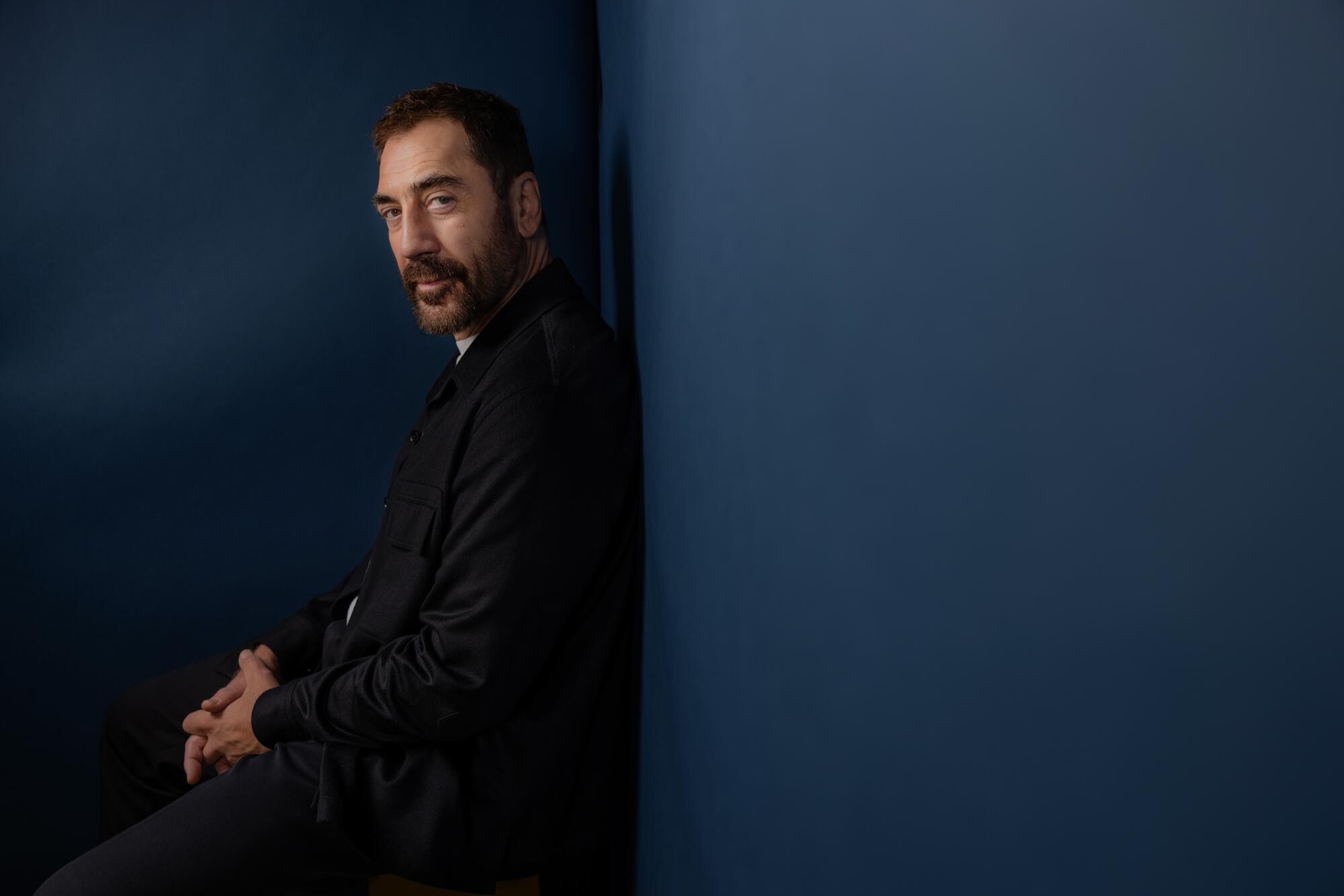
Javier Bardem of “Monsters: The Lyle and Erik Menendez Story.”
Javier, since doing the series are you now frequently asked about your own opinions on the Menendez case? The brothers claim their father molested them, and that is in part what led to them murdering their parents.
Bardem: I don’t think anybody knows. That’s the point. That was the great thing about playing that character, is you have to play it in a way that it’s not obvious that he did those things that he was accused of, because nobody knows, but at the same time you have to make people believe that he was capable.
I did say to Ryan [Murphy] that I can’t do a scene with a kid. Because in the beginning, they do drafts, and there were certain moments where I said, “I can’t. It’s not needed.” The only moment that I had a hard time was when [Jose] has to face [his] young kid. It was only a moment where Jose was mean to him. That’s not in my nature.
Henry: I discovered, while doing my series, “My body doesn’t know this isn’t real.” There’s an episode where I’m shot in the leg, and I’m bleeding out and I’m on all this different morphine and drugs and all this stuff, and I’m literally lying on this ground, take after take, having to mime this. To go through the delusion of this pain … in the middle of the takes, it was just so crazy. I would literally look at the crew and say, “Somebody hug me! Somebody!”
Stephen, that scene where you confront the boys in the parking lot with the bike, I was just like, “Oh, my God, how many times did he have to do that?” This kid gets in your face, and I was like, “Punch the kid!” My heart went out to you, man, not just as the character but as you being in there.
Graham: Because we did it all in one take, we had that unique quality. You’re using the best of two mediums. You’ve got that beauty and that spontaneity and that reality of the theater, and then you have the naturalism and the truth that we have with film and television. So by the time I get to that final bit, we’ve been through all those emotions. When I open the door and go into [Jamie’s] room, everything’s shaken. But it’s not you. It’s an out-of-body experience and just comes from somewhere else.
Bardem: Listen, we don’t do brain surgery, but let’s give ourselves some credit. We are generous in what we do because we are putting our bodies into an experience. We are doing this for something bigger than us, and that is the story that we’re telling.
What have been some of the more challenging or difficult moments for you, either in your career or your recent series?
Zellweger: Trying not to do what you’re feeling in the moment sometimes, because it’s not appropriate to what you’re telling. That happens in most shows, most things that you do. I think everybody experiences it where you’re bringing something from home and it doesn’t belong on the set. It’s impossible to leave it behind when you walk in because it’s bigger than you are in that moment.
Banks: I would say that the thing that I worked on the most for “The Better Sister” was [understanding] sobriety. I’m not sober. I love a bubbly rosé. So it really did bring up how much I think about drinking and how social it is and what that ritual is for me, and how this character is thinking about it every day and deciding every day to stay sober or not. I am also a huge fan of AA and sobriety programs. I think they’re incredible tools for everybody who works those programs. I was grateful for the access to all of that as I was making the series. But that’s what you get to do in TV. You get to explore episode by episode. You get to play out a lot more than just three acts.

Stephen Graham of “Adolescence.”
Stephen, about the continuous single shot. It seems like it’s an incredibly difficult and complex way to shoot a series. Why do it?
Graham: It’s exceptionally difficult, I’m not going to lie. It’s like a swan glides across the water beautifully, but the legs are going rapidly underneath. A lot of it is done in preparation. We spend a whole week learning the script, and then the second week is just with the camera crew and the rest of the crew. It’s a choreography that you work out, getting an idea of where they want the camera to go, and the opportunity to embody the space ourselves.
Cohen: That reminds me of a bit of doing the undercover movies that I do because you have one take. … I did a scene where I’m wearing a bulletproof vest. There were a lot of the people in the audience who’d gone to this rally, a lot of them had machine guns. We knew they were going to get angry, but you’ve got to do the scene. You’ve got one time to get the scene right. But you also go, “OK, those guys have got guns. They’re trying to storm the stage. I haven’t quite finished the scene. When do I leave?” But you’ve got to get the scene. I could get shot, but that’s not important.
Henry: There’s a certain level of sociopathy.
Slate: I feel like I’m never on my mark, and it was always a very kind camera operator being like, “Hey, Jenny, you weren’t in the shot shoulder-wise.” I feel like such an idiot. Part of it is working through lifelong, longstanding feelings of “I’m a fool and my foolishness is going to make people incredibly angry with me.” And then really still wanting to participate and having no real certainty that I’m going to be able to do anything but just make all of my fears real. Part of the thing that I love about performance is I just want to experience the version of myself that does not collapse into useless fragments when I face the thing that scares me the most. I do that, and then I feel the appetite for performance again.
Do you see yourself in roles when you’re watching other people’s films or TV show?
Graham: At the end of the day, we’re all big fans of acting. That’s why we do it. Because when we were young, we were inspired by people on the screen, or we were inspired by places where we could put ourselves and lose our imaginations.
We have a lot of t— in this industry. But I think if we fight hard enough, we can come through. Do you know what I mean? It’s people that are here for the right reasons. It’s a collective. Acting is not a game of golf. It’s a team. It’s in front and it’s behind the camera. I think it’s important that we nourish that.
Henry: And remember that none of us are t—.
Bardem: What is a t—? I may be one of them and I don’t know it.
Graham: I’ll explain it to you later.
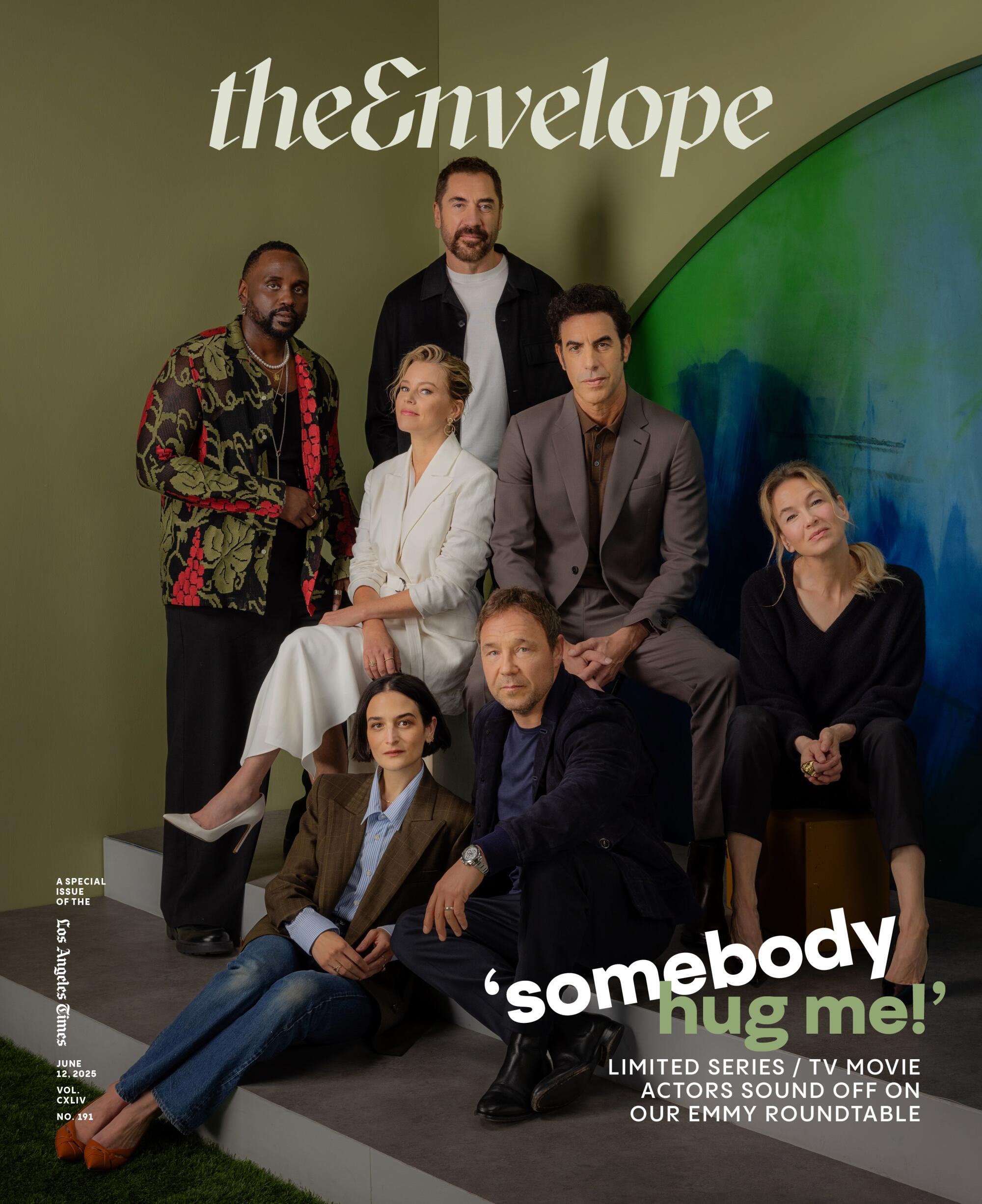
Movie Reviews
Predator: Killer of Killers
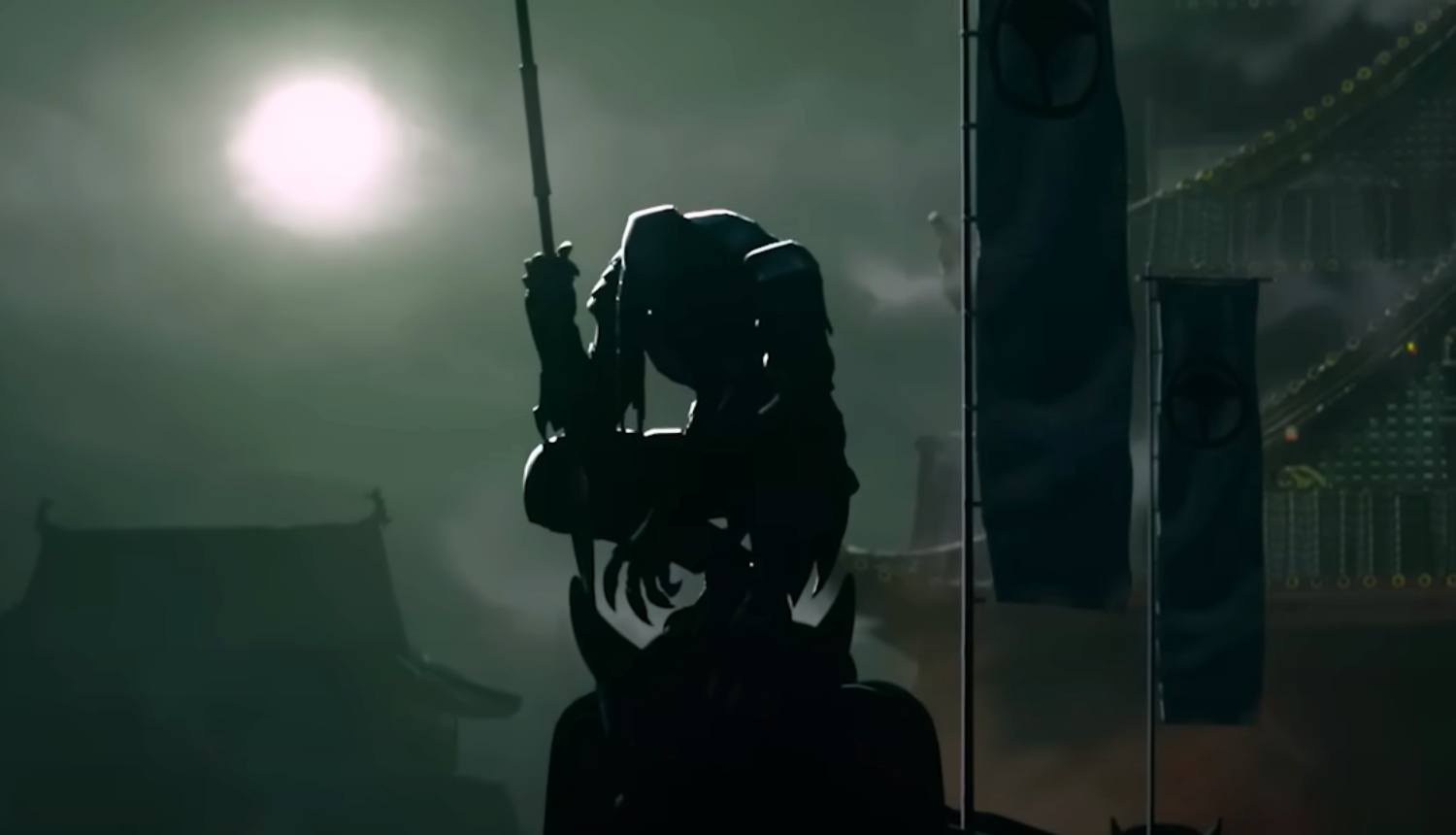
Movie Review
We have a talent for killing. Humans off everything from ants to elephants, and we’ve shown a special knack for killing each other. Want proof? Just thumb through a world history book, and you’ll find plenty.
But while anyone can kill, some seem like they’ve been born for it. Predator: Killer of Killers, introduces us to three of them.
Some call her the Valkyrie of the Northern Seas. But she began her life as Ursa, the daughter of a proud Norse chieftain who, when Ursa was just a girl, was killed before her eyes. The culprit: Zoran, chieftain of the Krivich. For the last few decades, Ursa has plotted bloody revenge, carving a gore-spattered swathe through Scandinavia along the way. But now, when Zoran is so close to her bloodstained fists, someone (or, rather, something) crashes the party.
In feudal Japan, two brothers once vied to be heir to their father’s armored crown. One refused to fight, but the other attacked: The more peaceful brother had to run away, ceding the crown to his sibling. But 20 years later, the father is dead and the exile returns, ready to make his brother pay. But—and you’ll notice a trend, here—something is watching, ready to make its own move.
Ensign Torres isn’t a killer. Not really. He’s a pilot—or, at least, he’d like to be. Torres is grounded at the moment, tasked with patching together a cantankerous bit of flying machinery before he’ll be allowed to take on the fighters from World War II’s Vichy France. But when he starts hearing radio chatter about “hooks in the sky,” and when he sees an otherworldly weapon that yanks hot engines straight out of the fuselage, Torres knows he must get airborne and warn the other American pilots—and fast.
All of these hunters—the headliners in three separate stories—quickly become the hunted. Prey for fearsome extraterrestrial predators, the Yautja. They’re bigger than humans are. Stronger. More technologically advanced. And, oh yeah, they can turn invisible, too. What hope do these poor earthlings have?
More than you might think.
-

 News1 week ago
News1 week agoVideo: Faizan Zaki Wins Spelling Bee
-

 Politics7 days ago
Politics7 days agoMichelle Obama facing backlash over claim about women's reproductive health
-

 News1 week ago
News1 week agoVideo: Harvard Commencement Speaker Congratulates and Thanks Graduates
-
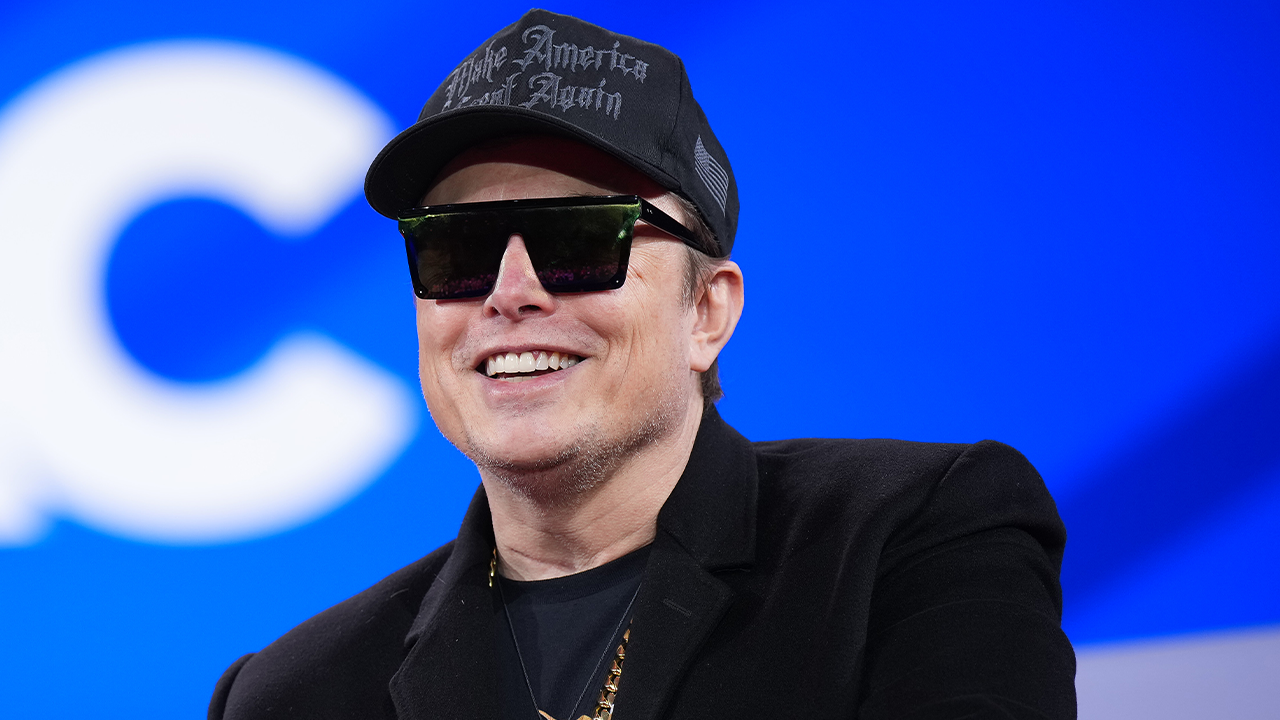
 Politics1 week ago
Politics1 week agoMusk officially steps down from DOGE after wrapping work streamlining government
-

 Technology1 week ago
Technology1 week agoAI could consume more power than Bitcoin by the end of 2025
-

 News1 week ago
News1 week agoPresident Trump pardons rapper NBA YoungBoy in flurry of clemency actions
-

 Technology1 week ago
Technology1 week agoSEC drops Binance lawsuit in yet another gift to crypto
-

 Technology1 week ago
Technology1 week agoOpenAI wants ChatGPT to be a ‘super assistant’ for every part of your life




